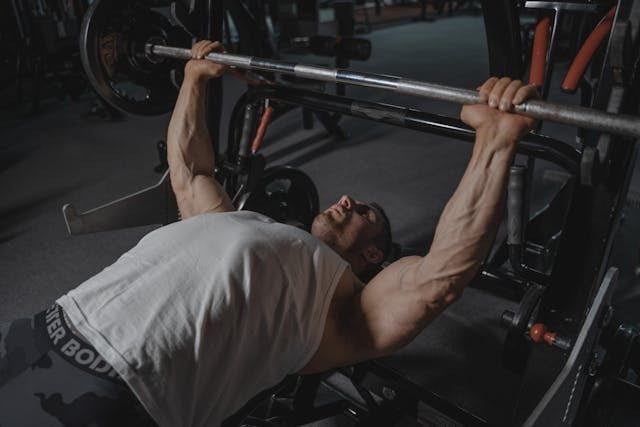
How Strong Is Strong Enough?
Why Every Gym Owner Should Know — and Teach — Minimum Strength Standards
As a gym owner, you're not just running a fitness business—you’re helping people live better, longer, more independent lives. Strength is your secret weapon. But the question your members might not be asking — but should — is: How strong is strong enough?
This isn’t about building powerlifters or chasing big numbers for social media. It’s about helping your clients hit the minimum strength standards that preserve healthspan — the years of life lived in good health and function.
Let’s break down the research-backed strength minimums and, more importantly, how to apply them in your gym to drive results, retention, and real-life impact.
Why Strength Is the Key to Long-Term Health
We all know strength training helps with body composition, confidence, and injury prevention. But its real value is keeping people independent and resilient as they age.
Muscle loss (called sarcopenia) starts in your 30s and accelerates in your 40s and beyond — unless you intervene. It’s among the strongest predictors of mobility loss, falls, and early mortality.
As a gym owner, your strength programs are life insurance policies your clients can use.
What Strength Standards Should Your Clients Meet?
Here are six essential movements with baseline numbers by age and gender. These aren’t elite goals. These are do-this-or-risk-decline standards.
1. Deadlift – Can You Pick Things Up Safely?
Men (20–50): 1.5x bodyweight
Women (20–50): 1.0–1.25x bodyweight
60+: At least 1.0x bodyweight (both genders)
In the gym: Use trap bars, kettlebells, or sumo stance to build competency. Program deadlifts at least once a week. Use these numbers as goals in assessments.
2. Squat – Can You Sit and Stand with Ease?
Men (20–39): 1.25–1.5x bodyweight
Women (20–39): 0.9–1.1x bodyweight
40–59: 1.0x BW (men), 0.75x BW (women)
60+: Bodyweight or 25–50% BW loaded
In the gym: Chair-to-stand tests are fantastic screens. Prioritize quality over load. Focus on full range and control.
3. Push-up / Bench Press – Can You Push Away from the Ground?
Push-up Minimums
Men: 30 (20s), 20 (40s), 10 (60s)
Women: 20 (20s), 10 (40s), 5 (60s)
Bench Press Standards
Men: 0.75–1.0x BW
Women: 0.5–0.75x BW
In the gym: Train push-ups with progressions—elevated, eccentric, band-assisted. Bench press can be swapped with dumbbells or floor press.
4. Pull-ups / Rows – Can You Pull Your Own Bodyweight?
Pull-up Minimums
Men (20–39): 8–10
Women (20–39): 1–3
50+: 1–5 pull-ups or 10+ bodyweight rows
In the gym: Use bands, negatives, or ring rows. Track pull strength monthly and celebrate improvements.
5. Farmer’s Carry – Can You Carry Your Life?
Minimum: 50% bodyweight per hand, 30 seconds
Goal: Bodyweight total, 60 seconds
In the gym: This one is a crowd-pleaser. Carries build grip, core, posture, and real-world confidence. Put them in finishers or warm-ups often.
6. Grip Strength – The Silent Predictor
Grip strength is measured in pounds of force, referring to the amount of force applied by the hand during a grip test—not the weight of an object being held. This is assessed using a handgrip dynamometer, a clinical device you squeeze as hard as possible. The device then reads in kilograms or pounds of force (lbf).
Men (60+): >57 lbs (26 kg)
Women (60+): >35 lbs (16 kg)
Young Adults: Men: 105–120 lbs | Women: 65–75 lbs
In the gym: Use dynamometers for testing. Farmer’s carries, hangs, rows, and thick grips all help.
BONUS TEST: The Chair Stand Test (for Clients 60+)
Healthy: Stand from a chair 5 times in <12 seconds
At Risk: >15 seconds = red flag for frailty
In the gym: This is a quick, no-equipment screen that packs a punch. Use it to start important conversations.
How Gym Owners Can Use These Standards
1. Make Assessments Matter
Build initial evaluations around these six metrics. Use them to guide programming, retesting, and client education.
2. Use Them as Milestone Goals
Help clients “graduate” through tiers of strength. Celebrate hitting deadlift bodyweight, doing their first push-up, or carrying their full bodyweight.
3. Educate Your Coaches
These standards should shape your coaching language and class design. Not every client is chasing a PR—but everyone needs to deadlift their groceries without pain.
4. Create Targeted Programs for 40+ and 60+
This group needs your gym the most. Build small groups or 1-on-1 options focused on function, fall prevention, and confidence. Make your gym the solution to aging strong.
Train for Life, Not Just PRs
Tell your clients it’s not about getting the biggest lift of your life. It’s about losing the least as the years go on. Resilience is the goal.
Can they shovel snow without tweaking their back?
Can they climb stairs while carrying groceries?
Can they travel without needing help with luggage?
If not, strength is missing — and you can fix that.
Programming Tips for Gym Owners
Train strength 2–3x per week
Prioritize compound lifts (squat, deadlift, push, pull, carry)
Use progressive overload with safe form.
Add Zone 2 cardio and basic nutrition support.
Use functional tests every quarter
Coaching Is the Key
Many clients need more than workouts — they need coaching. Good coaching prevents injury, accelerates progress, and builds buy-in.
Train your staff to coach movement, not just reps. Emphasize alignment, tempo, and intelligent scaling. Help clients move well first, then move often.
Final Word for Gym Owners
You’re in the transformation business—but it doesn’t have to be flashy. Getting a 55-year-old client to do bodyweight squats pain-free is a more significant win than any six-pack.
Your mission:
✅ Teach the minimum
✅ Build strength for life
✅ Be the reason your clients stay healthy, strong, and independent—decade after decade.
If you got into the gym business to change lives and impact people's health and fitness, strength-focused coaching should be the base of your pyramid. Start building that base.
If your clients need help changing their mindsets about Fitness, my book is a great place to start. Buy it on Amazon: Fitness First!


